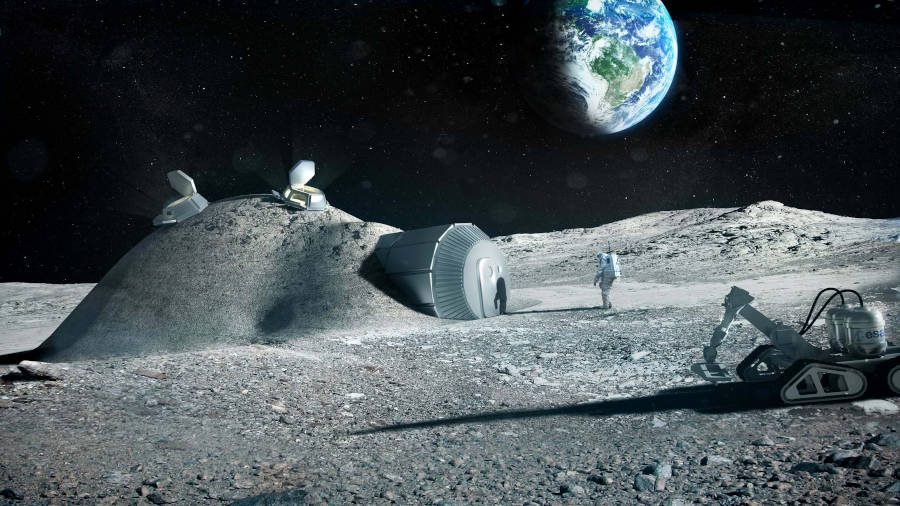
How 3D Printing Is Crucial For Space Travel


At 3DSourced we’ve covered everything 3D printing and 3D since 2017. Our team has interviewed the most innovative 3D printing experts, tested and reviewed more than 20 of the most popular 3D printers and 3D scanners to give our honest recommendations, and written more than 500 3D printing guides over the last 5 years.
Kennedy’s speech: “We choose to go to the Moon… not because they are easy, but because they are hard.” Armstrong’s “one small step for man, one giant leap for mankind.” Iconic people delivering iconic quotes while achieving iconic goals.
Yet no man has set foot on the Moon since 1972 — nobody younger than their mid-fifties has a first-person account of watching a Moon landing at home. We’re way overdue a revisit.
But things are looking up. Beyond NASA and the ESA, private companies like SpaceX are pursuing spaceflight, with Elon Musk famously saying he’ll fly humans onto Mars in the 2020s. Beyond this, he wants a million people on Mars by 2050.
And one technology is key to everything space: 3D printing.
This article covers three main areas:
- Moon & Mars buildings — how 3D printing is key to creating Moon and Mars shelters & buildings, printing structures from local materials.
- 3D printed rockets — how 3D printing makes rockets lighter, cheaper, faster to make, and safer.
- 3D printing in space — how 3D printing in space can support multi-year space flights, save lives in the event of a disaster, and prints parts (and even organs!) in space
3D printing Moon and Mars bases in Space
Until very recently with SpaceX’s Falcon 9 rocket slashing costs, sending 1 kilogram to LEO (low earth orbit) cost an eye-watering $10,000. Enormous amounts of fuel are burned to generate the energy required to break free of the Earth’s gravitational pull.
Currently we send around 7,000lbs of things to the International Space Station (ISS) every year, and this is considered acceptable because relatively for space, 250 miles is extremely close.
The Soyuz used to transport these materials takes around 6 hours to traverse this distance and dock — but for future Moon and Mars missions, this will not suffice.
Our best alternative is manufacturing Moon and Mars shelters using locally sourced lunar or martian regolith — the soil materials found on their surfaces. Shipping the materials from Earth is far too expensive, and nonsensically impractical.
Since the mid-1990s, visionaries like Dr Behrokh Khoshnevis have been working to 3D print entire shells of houses using huge room-sized behemoths that extrude concrete, layer by layer.
Now 25 years on, his vision is becoming a reality, with companies like Apis Cor 3D printing an entire house in 24 hours. Within the next few years it’s likely that concrete 3D printers on huge gantry systems or using robotic arms will start printing houses near you.
But before his vision came to fruition with his company, Contour Crafting, it almost never happened for Dr Khoshnevis. In 2008, the US housing market collapsed — covered in films like The Big Short — and all his support from the industry vanished overnight as companies cut costs and laid off workers.
Without any funding or support to develop his construction 3D printing, Khoshnevis turned to space. But could he adapt his concrete extrusion technologies to create structures on the Moon?
NASA began testing whether Contour Crafting technologies would work in microgravity, as well as whether they could print with materials they had which mimicked lunar regolith. Two NASA Grand Prizes followed in 2014 and 2016 as the company demonstrated they could 3D print structures even in a vacuum.
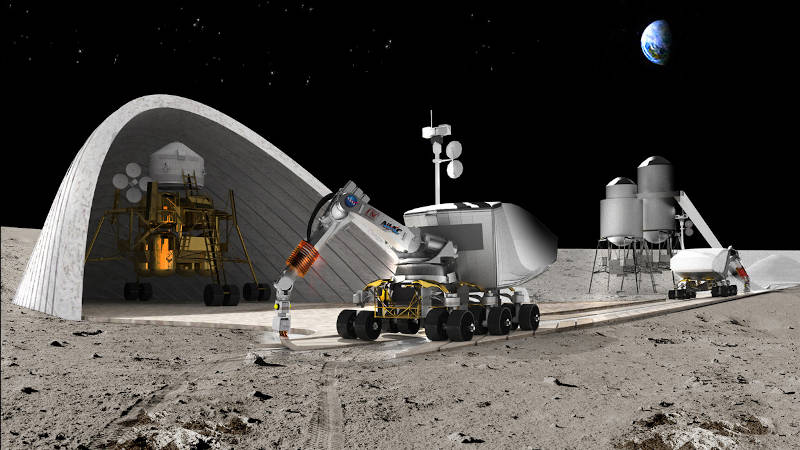
This is no mean feat; the lack of an atmosphere or gravity make it far more difficult to print than on Earth. Andrew Rush, President at Made In Space, explains this in depth in an interview with the Observer:
“[3D printing in space is different as] we don’t have the benefit of gravity to help us put things where we want to put them, so we have to rely on other forces to do the depositing of material.
“Also, in a zero-gravity environment, we don’t have any natural convection like air currents that move naturally to help with cooling. So we have to build thermal control into the 3D printing system to keep the hot parts hot and the cool parts cool.
“One of the great things about microgravity, though, is that we can actually make structures that wouldn’t be able to support their own mass if they were on Earth.”
Dr Khoshnevis has since turned his attention back to 3D printing houses on Earth, and no longer focuses on space. But many others are pushing boundaries.
See also: our feature story on 3D printing in construction.
The European Space Agency (ESA) first published plans in 2013 to 3D print a Moon base using lunar soil. They partnered with a consortium of experts including Foster + Partners, who designed a 3D printed shelter that shields astronauts from radiation as well as micrometeorites, with a built-in pressured inflatable area for astronauts to live in.
Foster + Partners’ design fits four people. Once a lunar lander reaches and lands on the Shackleton crater near the Moon’s South Pole, it carefully drops a capsule onto the lunar surface. At one end of the capsule, a dome gradually inflates to form the blueprint the 3D printed shelter will be built on.
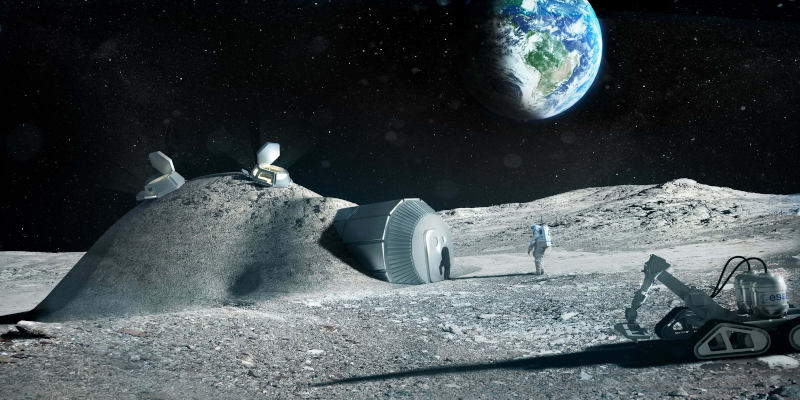
The lunar lander also contains two space 3D printer robots that resemble farmer tractors. They use a scoop on one side to harvest and deliver lunar regolith, depositing it on top of the inflatable dome. The other side has a robotic arm 3D printer that turns this soil into solid structure.
Gradually, solid 3D printed lunar structure is built over the dome, protecting the four astronauts from meteorites and gamma radiation. The original capsule acts as an airlock, with the astronauts able to live within the inflated dome area underneath the protective shell of 3D printed lunar regolith.
As only the original capsule and the inflatable dome need to be shipped, over 90% of the lunar shelter comprises lunar material. This is an enormous advantage compared with shipping everything from Earth.
To test their idea, they used a D-Shape 3D printer provided by Monolite UK — D-Shape, along with Contour Crafting, were tested by NASA for 3D printing in space — to print a 1.5-ton hollow cell block. Based on current research, Foster + Partners believe it would take a few months to completely completely build one lunar dome shelter on the Moon.
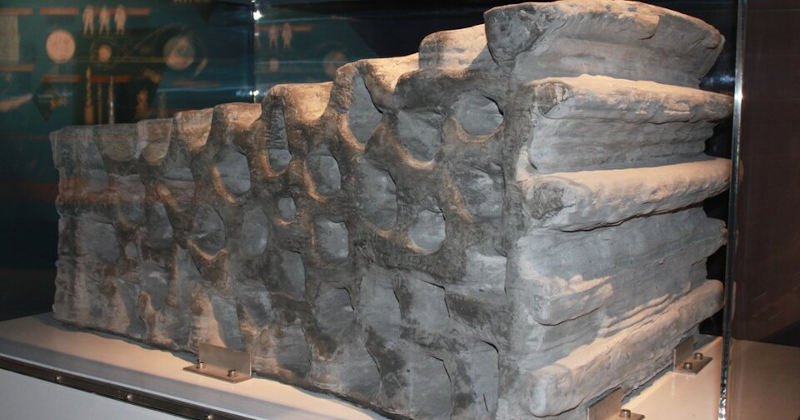
However, a major issue for 3D printing methods like the binder jetting-based technology in D-Shape 3D printers is they use liquids, and unprotected liquids boil away in a vacuum.
To counter this, researchers at Scuola Superior Sant’Anna in Pisa, Italy, experimented with inserting the space 3D printer’s nozzle beneath a simulated regolith material layer. Conveniently, according to Enrico Dini, inventor of D-Shape’s 3D printing technology, basalt rocks sourced from an Italian volcano are a 99.8% match to lunar regolith, so they can test their methods on similar material.
Small 2mm droplets were found to remain trapped within the soil underground, an encouraging sign for 3D printing on the Moon.
Another issue to 3D printing solid, habitable structures on the Moon are the wild variations in surface temperature. The Moon can oscillate between 125°C during its 13.5-day day, to -175°C during its 13.5-day night. Generally, the least volatile climate is found nearest the Moon’s poles, so any permanent settlements are likely to be set up there.
There are also other problems like keeping out lunar dust, which is dangerous to inhale.
But overall, the materials abundant in space and on planets create possibilities to 3D print without having to ship building materials over. As long as we have a good understanding of the local materials, 3D printers can be adapted to print with them, and create shelters and walls, landing pads, roads, and hangars on other planets and moons.
Some companies have already created designs based on local physics, climates and other factors to imagine what these 3D printed space colony dwellings would look like. Architectural design agency AI Space Factory have created designs for Mars astronaut shelters.
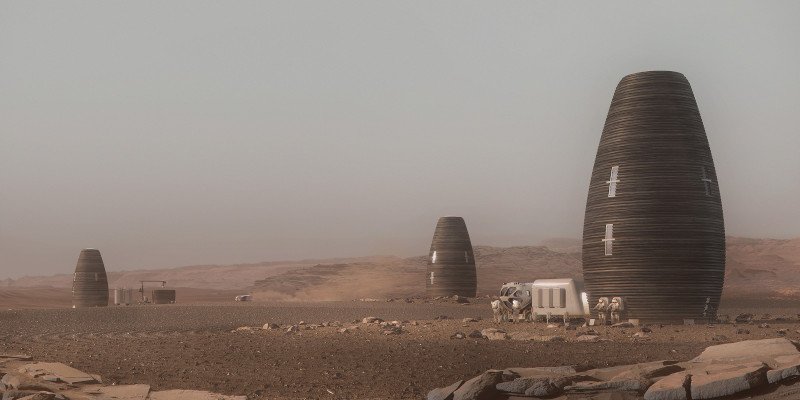
AI Space Factory’s Marsha Project envisions tall, thin martian dwellings able to house four astronauts made from local martian materials like basalt. The long, thin design is effective for countering Mars’ tough atmospheric and thermal pressures.
The egg-shaped design therefore minimizes mechanical stresses at the top and bottom of the building, and being higher up offers astronauts wider vantage points for studying weather and cloud formations. Additionally, the construction space 3D printer has to travel less widely to build a narrow structure, improving speeds and reliability.
3D Printing in Spacecraft & Rockets
3D printing in rockets, spacecraft and components of engines is nothing new. SpaceX and Boeing use hundreds of 3D printed parts in their rockets, highlighting advantages in printing in-house, reducing weight, reducing the number of parts, and speeding up iteration times.
3D printing is well suited to space as despite the increasing numbers of launches for satellites and other missions, rocket parts do not need to be mass-produced or made in large quantities. Additive manufacturing excels in printing accurate, light and strong parts as either one-offs or in low quantities, on-demand. Alternatives like metallic injection molding have minimum runs of hundreds of thousands of parts, so for space, 3D printing is far better suited.
Newer space companies have taken 3D printing’s uses to another level. Relativity Space boast the world’s largest metal 3D printer, based in their Stargate factory. Stargate works via large robotic arms using Directed Energy Deposition (DED) to make rocket bodies, and they also use Direct Metal Laser Sintering (DMLS) to 3D print their Aeon engines.
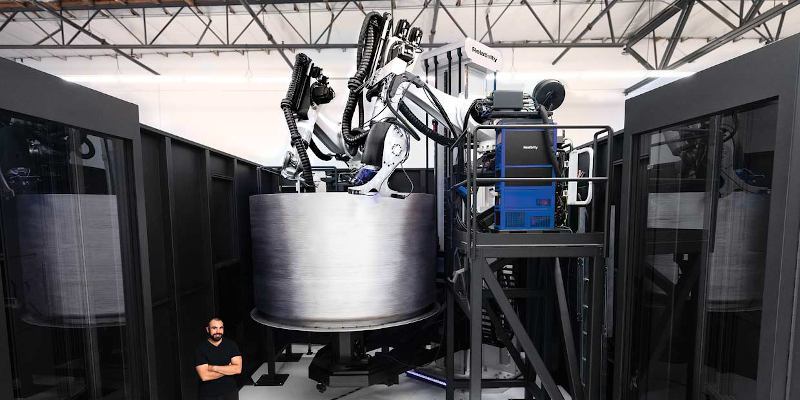
Observing the long build times and even longer iteration times, American company Relativity Space began their mission to build the first autonomous rocket factory, using advanced machine-learning and analytics along with 3D printing to build entire rockets.
They recognized early that much of the expenses associated with building rockets comes from the labor required to turn raw materials into rocket components and make sure nothing goes wrong during launch.
One of the main issues with rockets is that with their complexity they have so many parts, with exponentially more interactions between all these parts. With so many individual interactions between parts, the number of possible errors is magnified. With less parts comes less interactions, and therefore less safety issues or expensive verification.
Rather than the 100,000+ parts associated with traditional rocket builds, Relativity Space aim for 1,000 parts or less, meaning they can build quicker — they claim they can go from raw materials to flight in 60 days — and iterate in record time — they say in just 6 months. Rather than abiding by industry-standard 12-24 month build and iteration times, Relativity Space tested five versions of their Aeon engine in just 14 months.
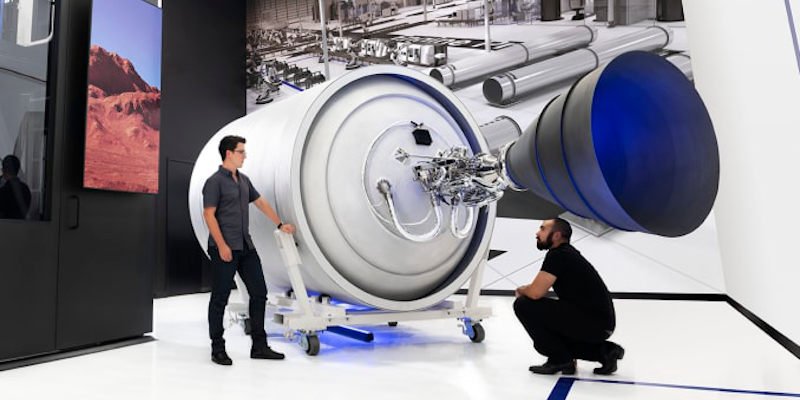
Previously-used manufacturing techniques built rockets that required more parts because they were not capable of creating the geometries to build these structures in a single part. 3D printing can create far more intricate geometries, as for example DMLS metal parts sit in a powder bed which prevents any overhangs or delicate areas from deforming during the printing process.
With 3D printing no welding or manual human tooling is used, reducing parts and therefore part interactions, allowing Relativity Space to move faster. Solid parts without any welding are also stronger, and therefore safer.
The Apollo missions used a Saturn V rocket to first land on the Moon, comprising around 3 million parts in total. Relativity’s DMLS 3D printed Aeon 1 engine requires just three, and they want to bring this down to one single part.
As they control their means of production within their factory, Relativity Space can quickly improve not only the designs of rockets and parts, but improve speed, efficiency and quality by using the same analytics and knowledge accumulation to improve the factory.
Their first rocket, the Terran I, is the world’s first 3D printed rocket. Able to launch up to 1,250kg into low-earth orbit, Relativity Space say the Terran I is among the most cost-effective launchers in the world, with dedicated missions costing $12M. They are due to launch the first Terran 1 in late 2021.
Despite only being founded in 2015, Relativity Space has quickly grown to over 230 employees and taken over $680M investment, with a recent $500M investment round valuing the company at $2.3 billion. Having proven 3D printing in space can revolutionize production, cutting weight that is so important in spaceflight, Relativity look set to further impact space travel in the near future.
Not far away, another space company is using 3D printing to create lighter, safer rocket engines with far fewer parts.
Founded in 2006 and now with over 500 employees, Rocket Lab’s Electron rocket is powered by their 3D printed Rutherford engine. Weighing just 35kg, the Electron rocket features a 3D printed combustion chamber, injector, main propellant valves and pump. The rocket’s name is extra appropriate given that these parts were 3D printed using electron beam melting (EBM).
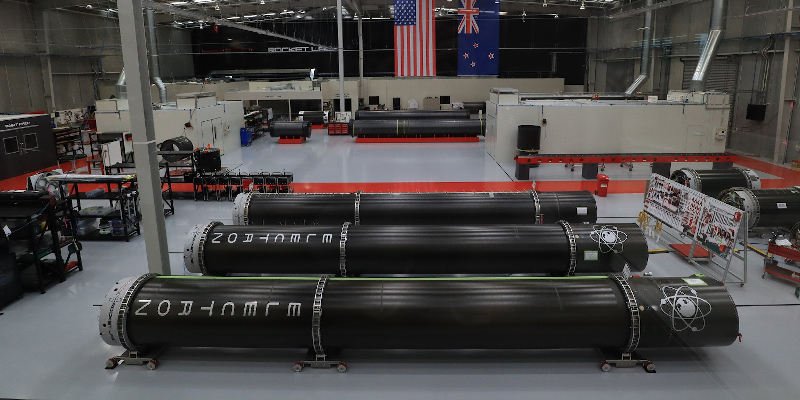
The first Rutherford engine tests began and the end of 2016, and since then over 200 models have been 3D printed. The lighter weight makes for cheaper satellite launches, and Rocket Lab are also involved in private Moon spaceflight to put CubeSats — miniature satellites 3D printed in PEEK — into lunar orbit for NASA to conduct space research.
NASA and the ESA have also ultilized 3D printing in their space research and plans. NASA 3D print rocket parts including nozzles, thrust chambers and even propulsion chambers within their RAMPT project, cutting down on the number of components required and creating lighter liquid rocket engines.
The ESA have published case studies describing how using 3D printing to print a space-bound titanium on-off valve negated the need to weld anything together, and without the weld — a point of weakness — it was safer and 40% lighter, making it far cheaper to launch.
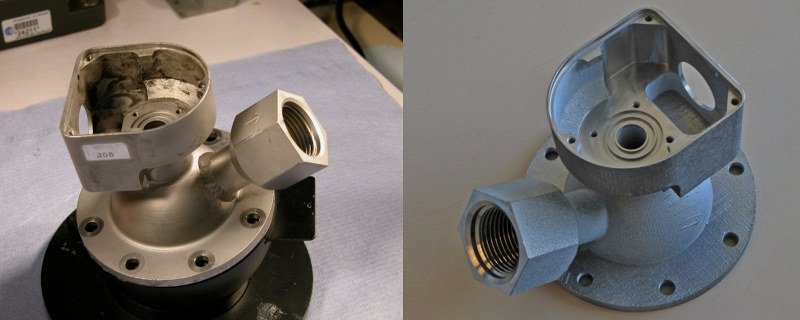
It’s not all sunshine and roses, there are difficulties with post-processing — and in some cases, precision. But 3D printing rockets and spacecraft parts at the very least promises to make launches significant cheaper by shaving off weight.
Beyond rockets, Mars Rover-esque vehicle concepts have been released, designed to roam the foreign soils of other planets and moons. The Audi Lunar Quattro was designed by a German team and supported by Audi: a small rover able to traverse the Moon’s bumpy surface featuring aluminum and titanium 3D printed solar panels that power its electric motors and cameras.
These 3D printed parts helped cut the Lunar Quattro’s weight down to 35kg, and the rover is slated for a 2021 release to the Moon aboard a SpaceX Falcon 9 rocket.
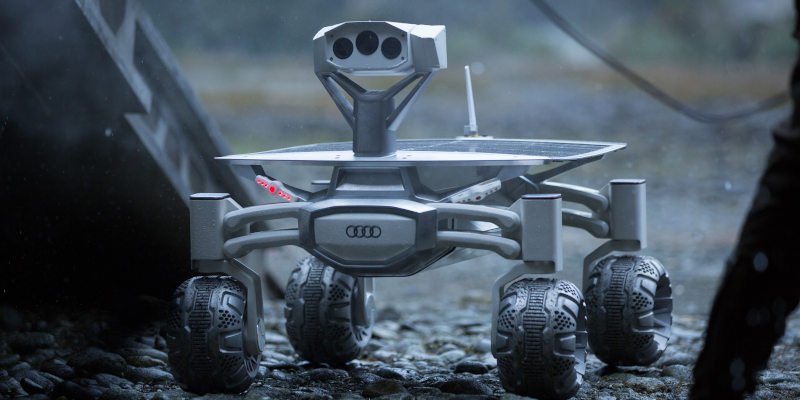
3D Printing in Space
Everyone has doubtless seen iconic footage of brave, grinning astronauts floating in zero-gravity on board space stations, whether in movies or real life. But the same conditions that allowed for Homer Simpson’s iconic potato chip-eating montage make 3D printing in space tricky.
Space 3D printer manufacturer Made In Space are helping make things in space, sending their 3D printer to the International Space Station (ISS) in 2014. This zero-gravity FDM 3D printer, called the AMF (Additive Manufacturing Facility) printed parts while orbiting Earth.
It has a 6 x 6 x 6 inch print volume, and is able to 3D print ABS, ULTEM 9085, and HDPE. It 3D printed parts including a wrench, an antenna part, and a part to connect free-flying robots, which were then compared with identical components 3D printed on Earth.
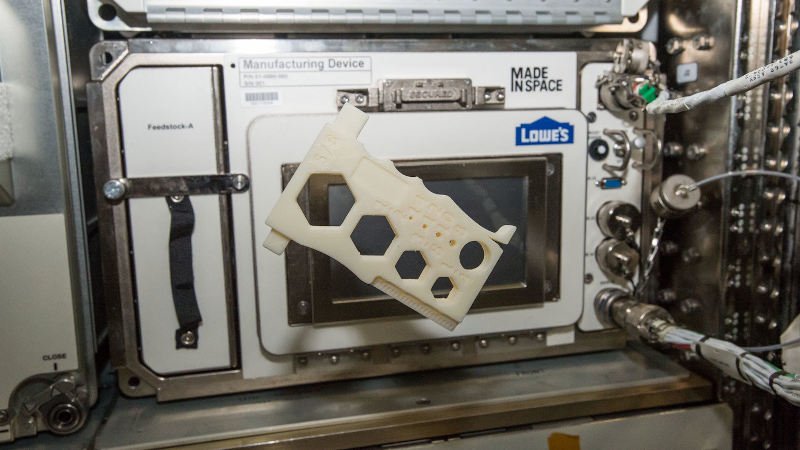
After tests, it was found these space 3D printed tools and objects worked fine, and microgravity did not prevent useful 3D printed things from being created. Space 3D printing was good to go.
Not having the tools on board was no longer a problem. The wrench 3D print was remotely sent to Made in Space’s 3D printer on the ISS from Earth, 250 miles away. In the event of an unforeseen issue, simply find out what tools or objects you need to fix the problem, have them designed on Earth and beamed to you, and perform the fix.
Tethers Unlimited went one further in February 2019, shipping a ReFabricator to the ISS which allows astronauts to recycle the waste materials that accumulate while in space. Printing with ULTEM 9085, a high-performance polymer similar to PEEK, it can also recycle these parts back into feedstock for re-use.
“Astronauts could use this technology to manufacture and recycle food-safe utensils and turn what is now inconvenient waste into feedstock to help build the next generation of space systems.”
— Rob Hoyt, CEO, Tethers Unlimited
And it doesn’t stop there: NASA have also been exploring how to 3D print food in space. One notable investment was backing food 3D printing company BeeHex with $1m to create a 3D printed pizza in space. This isn’t just a gimmick but perhaps integral to longer — perhaps even generational — space travel.
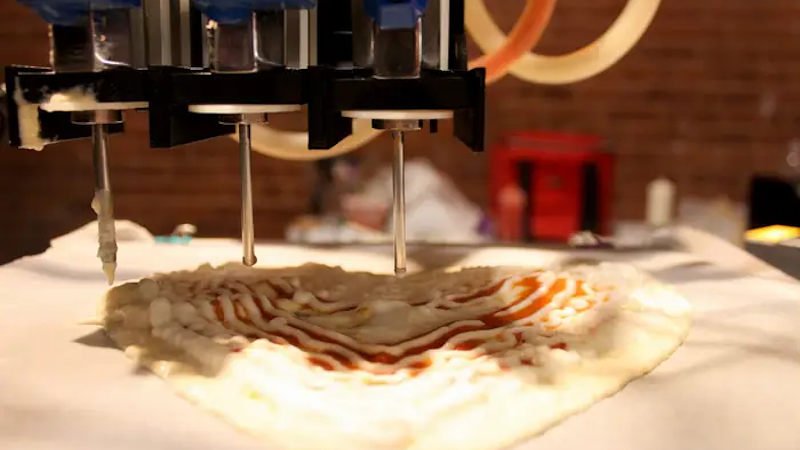
3D printable food ingredients such as for pizzas can be stored in special cartridges that exponentially slow spoiling. As a result, these ingredients could remain edible for decades, feeding astronauts on their voyage into the outer realms of space.
Conclusion and other projects
The spacemen have said it themselves: 3D printing “represents an important aspect of NASA’s low-earth orbit commercialization initiatives.”
3D printing augments every facet of space exploration, from building better rockets, to building safe interplanetary habitats, to sustaining us in space. Even the Starman space suit helmets were 3D printed.

3D printing is already crucial to producing and launching more affordable satellites, and companies like Relativity Space have made additive manufacturing central to their mission to autonomously create affordable rockets for launching smaller cargoes into orbit.
More 3D printing will take place in space once space travel becomes more frequent. No other manufacturing method or technology offers the same ability to print on-demand and on-location, and at those complexities. When NASA talks of “low-earth orbit commercialization initiatives,” it is likely they mean asteroid mining, with trillions of dollars worth of metals waiting to be harvested to replace our cannibalistic expedition into Earth’s caverns in search of non-renewables that take us further and further from our planet’s natural balance.
Niche opportunities exist, ironically, for space manufacturing of parts to be shipped to and used on Earth, rather than the other way around. In 2020, Made In Space tested a Ceramics Manufacturing Module (CMM) using SLA-based ceramics. This could be used to repair heat shields and other parts.
Under zero-gravity less intense stresses are imposed upon any parts being 3D printed, and any remaining stresses are more uniformly distributed around the part. Therefore, stronger and lighter parts can be produced in space than can be made on Earth. This could open a future market for extremely high-performance, next-gen ceramic turbine blades manufactured on Earth-orbiting additive manufacturing mini-factories and flown back to Earth to be sold and used.
In a similar vein, some types of 3D bioprinting are not possible on Earth, but are perhaps possible in space. Perhaps in the not-so-distant future, organs will be 3D printed in space, shipped back to Earth, and transplanted into patients to bring renewed intergalactic vitality. TechShot’s BioFabrication Facility (BFF) recently 3D printed part of a human meniscus in space.
While no one can predict what the future of the human race will hold over the next century — despite Elon Musk’s optimistic predictions of million-strong Martian population — following from a half-century of lacklustre and post-Cold War lethargic space development, the future of space travel looks very exciting indeed, buoyed by its trusty sidekick, 3D printing.
Other articles you mat be interested in:




















